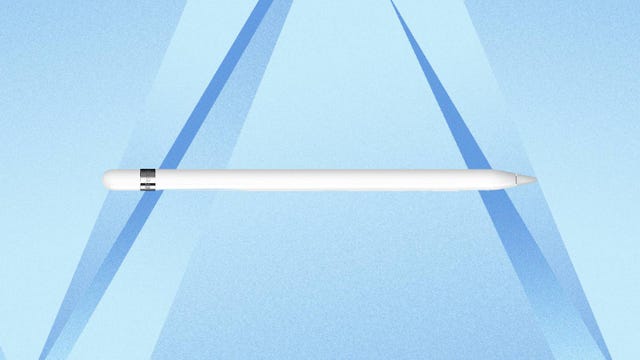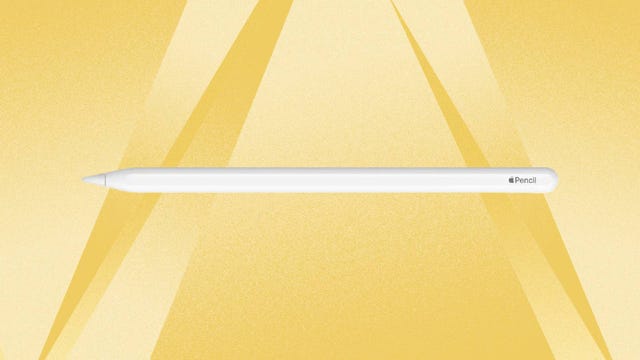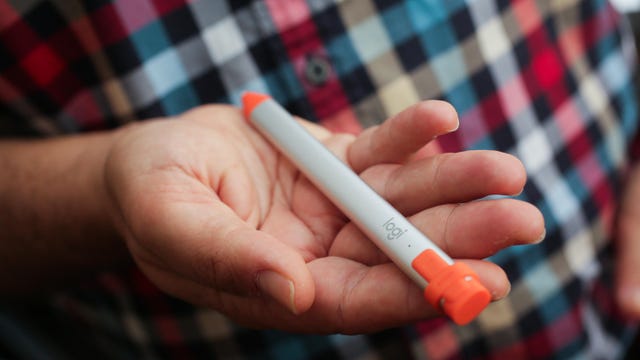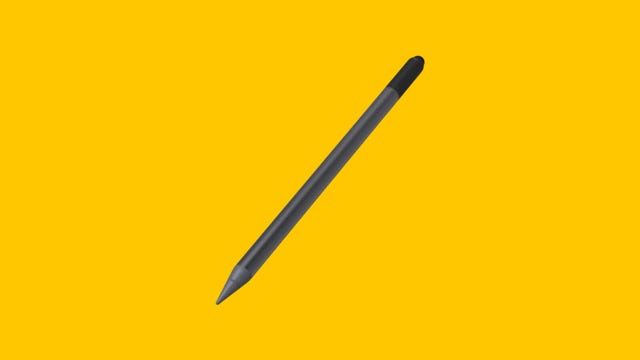Technologies
Best Apple Pencil Deals 2023: Save $15 on Apple Pencil 2
Need an Apple Pencil but don’t want to pay full price? We’ve got you covered.
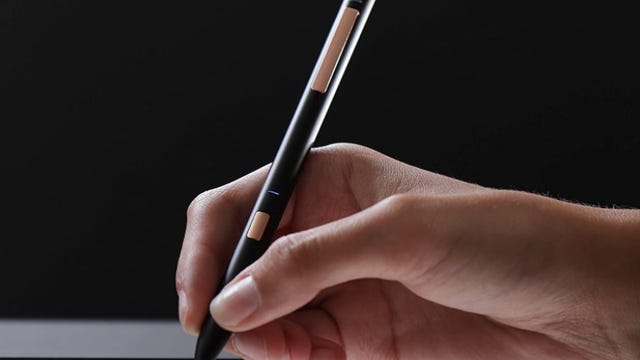
Apple Pencil deals crop up fairly frequently, which is welcome news for iPad owners. Apple devices generally don’t go on sale all that often, but this useful iPad accessory has seen quite a few price drops, so there’s usually a good chance you can avoid paying full price for one.
Apple’s sleek stylus offers precise pressure sensitivity and is designed to pair seamlessly with Apple’s tablets for a fluid experience. This premium tech doesn’t come cheap, though, with prices starting at $99. That’s why we’ve scoured the web to bring you the very best Apple Pencil deals available so you can get one in your hands for less. We’ve also gathered up some of the best alternatives out there in case you’re looking for an even more affordable option.
Below is a current breakdown of the best Apple Pencil deals available right now, with a quick look at historic low pricing for both models.
Apple Pencil pricing 2023
| Model | Apple Store price | Best price right now | Best all-time price |
|---|---|---|---|
| Apple Pencil (1st gen) | $99 | $89 | $70 |
| Apple Pencil (2nd gen) | $129 | $114 | $85 |
Beyond the Apple Pencil, there are a few great Apple Pencil alternatives that are also worth considering, and there are frequent deals on those, which we’ve highlighted farther down the page.
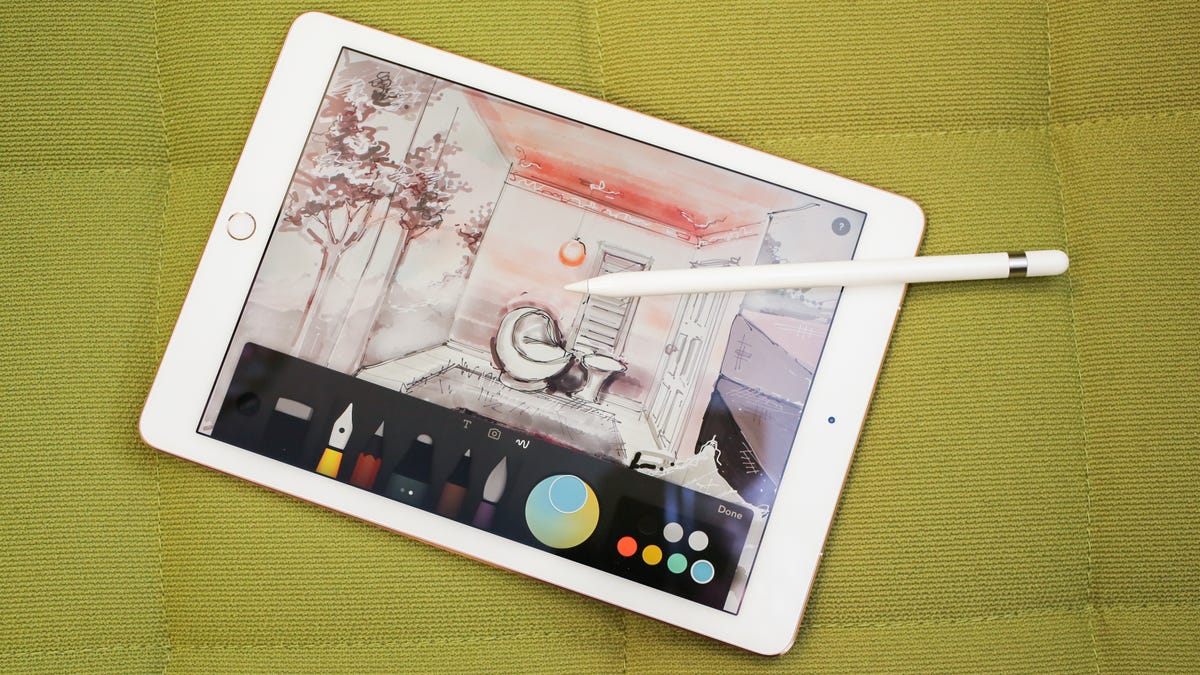
Best Apple Pencil (1st gen) deals
Apple’s first-gen Apple Pencil was originally released in November 2015 and has stuck around since then. At its debut, it worked only with the first iPad Pro model before support was added to subsequent models. It has a Lightning connector built into the end for charging the Apple Pencil right from your iPad and has a removable tip that can be changed out after your current one starts to get worn down.
The first-gen Apple Pencil is compatible with all pre-2018 iPad Pro models, the iPad Air 3, the iPad Mini 2019 and all base-model iPads since 2018. It’s also the one to get to use with the new 2022 10th generation iPad. Awkwardly, there are two versions of the first-gen Apple Pencil for sale at most retailers: one with a Lightning adapter and one with a USB-C adapter. Other than the adapter, the Apple Pencil is exactly the same, so the deciding factor between them is purely how you wish to charge the device back up. The USB-C version hasn’t been on the market as long and tends not to be discounted. Here are the best first-gen Pencil deals you can buy right now.
Amazon, Walmart and B&H all have the first-generation Apple Pencil available for $89 right now, which saves you $10 compared to the Apple Store price. It comes with the USB-C adapter, which is required to pair with the newest iPad model. We have seen it go as low as $70 in the past and deals dropping it under $80 aren’t too infrequent, so if you can hold off you might get a better price within the next few months.
Best Apple Pencil (2nd gen) deals
The second-gen Apple Pencil was launched in October 2018 alongside the third-gen iPad Pro, and while it may look similar on the surface, there are quite a few differences between the two models. One big difference is that the Apple Pencil 2 charges magnetically while attached to newer iPads, meaning there’s no Lightning connector. The design is slightly refined as well, with one flat side that’s used to charge and a sensor near the tip that enables double-tap features.
The second-gen Apple Pencil works with all 11- and 12.9-inch iPad Pros (2018 and later models), as well as newer iPad Air (2020 and 2022) models and the iPad Mini 6. Here are the best Apple Pencil 2 deals you can get right now.
A few retailers have the Apple Pencil 2 listed at $114 right now, which is $15 less than Apple charges for it. With regular price drops under $100 in the last six months, and the price falling as low as $85 just weeks ago, it’s hard to recommend nabbing one at this price unless you really need it right away. Chances are, steeper discounts will be coming down the pike.
Best cheap Apple Pencil alternatives
While the Apple Pencil offers one of the best experiences when paired with the iPad, it may not be the best choice for everyone. There are a number of cheaper Apple Pencil alternatives that you can take a look at. Here are some of the best ones that are on sale right now.
The Logitech Crayon works with just about every iPad out there, unlike the Apple Pencil, where you have to worry about which iPad model you have to ensure you buy the right one. It doesn’t have the fancy instant pairing or magnetic charging, but other than that it works very similarly to the Apple Pencil for a fraction of the price. It’s $10 off at Amazon right now.
This stylus is a great cheap alternative to the Apple Pencil if you want the overall style of the Pencil without the price tag. It has removable tips, can be turned on and off and even recharges via USB-C. It lists for $40, but you can grab select colors for as little as $25 right now at Amazon.
Zagg’s Pro Stylus also offers an Apple Pencil-like experience for less. It features palm rejection and tilt-recognition tech like Apple’s option, offers automatic pairing and even attaches magnetically to the side of your iPad Pro or iPad Air (though you’ll need to charge it via USB-C).
This stylus pen has a nice sleek design and offers a black option that Apple does not currently have for its Pencil models. It offers up to 12 hours of battery per charge, and a 4-minute charge can give you an extra hour of battery life. It uses Micro-USB for charging and can charge and write at the same time. There aren’t any discounts on this stylus at the moment, but it’s still a solid value at less than $50.
Apple Pencil vs. Apple Pencil 2: Which should you buy?
The decision here is simple: You have to buy the one that’s compatible with your iPad. Apple does not let you pick which Apple Pencil you want to use with which iPad. Instead, iPads are only compatible with a specific model of the Apple Pencil.
As outlined above, the original Apple Pencil works with the first- and second-gen 12.9-inch iPad Pro, 10.5-inch iPad Pro, 9.7-inch iPad Pro, iPad Air 3 and fifth-gen iPad Mini, and all of the base-model iPads since the sixth-gen model. If you have a newer iPad Pro, fourth- or fifth-gen iPad Air or the sixth-gen iPad Mini, you’ll need to opt for the Apple Pencil 2.
If you want to avoid this confusion, you can select from one of the non-Apple alternatives listed above, which generally have broader compatibility.
Technologies
The Black Friday Gaming Deals Are Here. Shop Now and Save Big on PlayStation, Xbox and Alienware
Technologies
Looking for a Free iPhone? Verizon Will Basically Hand You One With This Black Friday Offer
Technologies
Smartphone vs. Dumb Phone: Why People Are Going Basic
Here’s how to ditch your smartphone for a dumb phone. It’s digital detox done right.

Over the past couple of decades, smartphones have become an integral part of our lives. According to the Pew Research Center, about 91% of Americans own a smartphone. Statista reports that the number of global smartphone owners is estimated to reach 6.1 billion in 2029. For many, a smartphone is an always-on internet device that keeps us connected to the world.
But there are also significant downsides to having one. If you’re concerned about how much time you spend on your phone, you aren’t alone: Some people feel addicted to their smartphones, checking their email and social media feeds hundreds of times a day. Perhaps you find yourself doomscrolling through the news or wasting time on mindless apps and games rather than being productive at work or spending quality time with your family. Sure, you could simply limit your screen time, but that takes willpower that you might not have.
This rise in this obsessive behavior toward smartphones explains the resurgence of so-called dumb phones in recent years. Sometimes referred to as feature phones, dumb phones are essentially stripped-down cellular devices that lack the bells and whistles of modern smartphones. Some only let you call and text, while others have a few more features such as a camera or a music player. Dumb phones typically offer only the most basic of features, minimal internet and that’s about it.
If that intrigues you, read on. In this guide, we’ll highlight the different kinds of dumb phones on the market, what you should look for when shopping for one, and whether a dumb phone is even right for you.
The differences between a dumb phone and a smartphone
A smartphone is essentially a tiny computer in your pocket. A dumb phone lacks the apps and features that smartphones have. More advanced dumb phones, or «feature phones,» offer a camera and apps like a calendar or a music player. Some even have minimal internet connectivity.
Many dumb phones are reminiscent of handsets with physical buttons from decades ago. Others have a T9 keypad where you press the numbers with the letters on the keypad and the phone «predicts» the word you want.There are even feature phones with touchscreens and more modern interfaces.
What should you look for when getting a dumb phone?
The dumb phone that’s best for you will depend on the reason you’re getting it. Do you want to go without internet access entirely and do it cold turkey? Then, perhaps a basic phone is what you want. Basic phones are also great if you just want a secondary emergency backup handset. Do you want at least some functionality, like Wi-Fi hotspot capabilities or navigation directions? Then look into «smarter» dumb phones that have those features.
Alternatively, if you think you still need certain smartphone apps like WhatsApp or Uber, you could look into «dumbed down» Android phones with smaller screens and keypads (sometimes called Android dumb phones). They don’t qualify as dumb phones technically, but they’re often seen as an in-between solution for those who can’t quite commit to a lifestyle change.
What are the different kinds of dumb phones on the market?
As more people seek smartphone alternatives, a large number of modern dumb phones have emerged on the market. If you’re on the hunt for one, we recommend using Jose Briones’ excellent Dumbphone Finder, which lets you filter and browse a dizzying array of choices based on your preferences and network provider. We also suggest perusing the r/dumbphones subreddit, where you’ll find a community of dumb phone enthusiasts who can assist you in your dumb phone journey.
Here are a few different kinds of dumb phones that caught our attention.
Smarter dumb phones
If you have a tough time letting go of your smartphone, there are a few smarter dumb phones on the market that might be a good gateway into the smartphone-free world. They often have touchscreen interfaces and more features you’d find on smartphones, like a music player or a camera.
Perhaps the smartest dumb phone on the market right now is the Light Phone 3, which has a 3.92-inch OLED screen and a minimalist black-and-white aesthetic. Its features include GPS for directions, Bluetooth, a fingerprint sensor, Wi-Fi hotspot capabilities, a flashlight, a 50-megapixel rear camera, an 8-megapixel front-facing camera and a music player. It also has 5G support, which is something of a rarity among dumb phones.
However, it’s expensive at around $700, which is almost the same price as a higher-end smartphone. Light also sells the Light Phone 2, which lacks cameras and a flashlight, but it’s much cheaper at $300 (about the price of a midrange smartphone). It uses an E Ink screen instead of OLED. However, some reviews have said that the texting speed is pretty slow.
Another touchscreen phone that’s similar to an e-reader and is fairly popular with the dumb phone community is the Mudita Kompakt. It has wireless charging, an 8-megapixel camera, GPS for directions, a music player, an e-reader and basic apps including weather, a calendar and more.
Barebones phones
On the other hand, if you’re ready for a full digital detox, then you could consider just a basic phone that lets you call, text and not much else. Simply harken back to the phones of decades ago and you’ll likely find one that fits that description.
One of the major brands still making basic phones is HMD Global, which also makes Nokia-branded handhelds like the Nokia 3210 and the Nokia 2780 Flip. HMD makes its own line of phones too, such as the iconic pink Barbie phone, complete with a large Barbie logo emblazoned on the front. It even greets you with a cheerful «Hello Barbie» each time it powers on. We should note, however, that HMD has said it’s exiting the US, so the only way to get one might be through third-party reseller in the near future.
There are still basic phones being sold in the US. The Punkt MP02 is one of the more interesting models, thanks in part to its unique slim design and clicky buttons. You can even send messages via Signal with it, though you’ll have to text via the old-fashioned T9 method.
Android dumb phones
Some dumb phone purists might argue that anything Android doesn’t belong in this list, but if your main goal in quitting your phone is to be free of the social media algorithm, then perhaps a scaled-down smartphone is a good halfway point for you. A couple of examples are the Unifone S22 Flip phone (formerly the CAT S22 Flip phone) and the Doov R7 Pro candy bar (available outside of the US), both of which are Android handsets but have traditional cell phone designs (The Unifone S22 Flip runs Android Go, a simplified version of Android).
This way, you still have access to your «must-have» apps, and might be able to better withstand the temptation of social media because of their tiny size and shape (or at least that’s the theory).
Should you buy an old or used dumb phone? Will it work on a carrier’s 5G network?
There’s nothing wrong with buying an old or used dumb phone, but you should make sure that it works with your cellphone network. Not all phones work with all networks, and certain carriers in the US aren’t compatible with every device, so check their restrictions. AT&T, for example, has a whitelist of permitted devices and you generally can’t use something that isn’t on that list.
As for 5G support, that’s pretty rare when it comes to dumb phones, mostly because they often don’t really need it (they typically won’t see the benefit of faster data speeds, for example). Some, however, do have 5G support, such as the Light Phone 3, the Sonim XP3 Plus 5G and the TCL Flip 4. If 5G support is important to you due to network congestion concerns, then that’s something you can keep an eye out for.
What if I’m not able to give up my smartphone just yet?
Maybe you need your smartphone for work or emergencies, or maybe you just don’t find any of the existing dumb phones all that appealing. If you don’t mind exercising your willpower, there are existing «wellness» tools on both Android and iOS that could help limit your screen time by allowing you to set app timers or downtime modes.
You could also disable and uninstall all your most addictive apps and use parental control tools to limit your screen time. Last but not least, there are several apps and gadgets designed to help you cut back on doomscrolling, like the Brick and the Unpluq tag.
-

 Technologies3 года ago
Technologies3 года agoTech Companies Need to Be Held Accountable for Security, Experts Say
-

 Technologies3 года ago
Technologies3 года agoBest Handheld Game Console in 2023
-

 Technologies3 года ago
Technologies3 года agoTighten Up Your VR Game With the Best Head Straps for Quest 2
-

 Technologies4 года ago
Technologies4 года agoBlack Friday 2021: The best deals on TVs, headphones, kitchenware, and more
-

 Technologies4 года ago
Technologies4 года agoVerum, Wickr and Threema: next generation secured messengers
-

 Technologies4 года ago
Technologies4 года agoGoogle to require vaccinations as Silicon Valley rethinks return-to-office policies
-

 Technologies4 года ago
Technologies4 года agoOlivia Harlan Dekker for Verum Messenger
-

 Technologies4 года ago
Technologies4 года agoiPhone 13 event: How to watch Apple’s big announcement tomorrow

